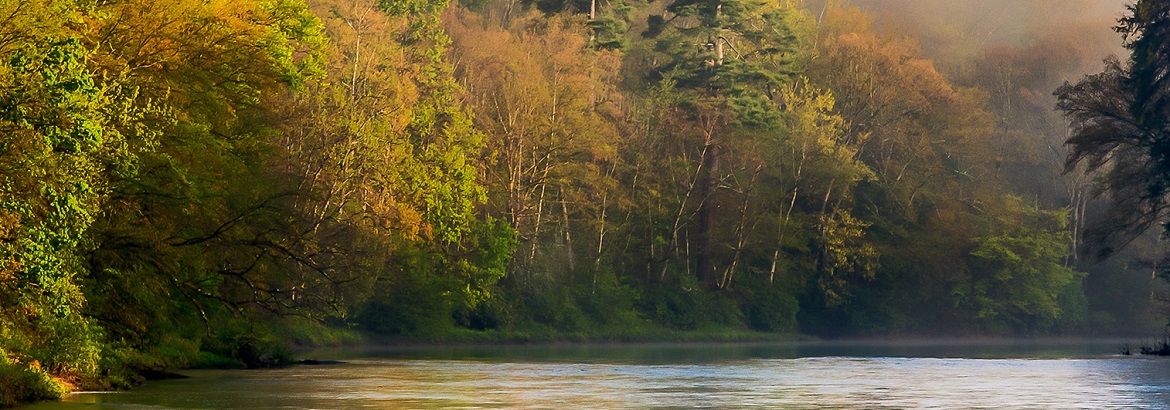 Mission
Mission
The Pennsylvania Natural Heritage Program provides scientific information, expertise, and assistance to support the conservation of biological diversity.
The mandate for PNHP stems from Act 18 of 1995 (Conservation and Natural Resources Act) which directs the Department of Conservation and Natural Resources (DCNR) "To undertake, conduct and maintain the organization of a thorough and extended survey of this Commonwealth for the purpose of inventory, survey and elucidation of the ecological resources of this Commonwealth, to gather and digest information from sources within and outside this Commonwealth and to put the results of the survey into a form convenient for reference. The ecological survey should identify the significant natural features of this Commonwealth and the species which comprise these features."
DCNR implements Act 18 through its support of the PNHP and its mission to provide scientific information, expertise, and assistance to support the conservation of biological diversity. PNHP, through its partner organizations, performs a variety of biodiversity inventories and surveys across the state, enters and maintains that information in a central database, and provides that information through a number of tools and publications, including the Pennsylvania Conservation Explorer and County Natural Heritage Inventory reports.
PNHP is not a regulatory agency, but its partner organizations use PNHP information to screen projects for impacts to species and resources under their jurisdiction in coordination with the Pennsylvania Department of Environmental Protection (DEP) and in accordance with the Pennsylvania Natural Diversity Inventory (PNDI) policy.
Our Goals
- Maintain and improve a strong, fully functioning, mutually beneficial Natural Heritage Partnership.
- To be the most trusted, accurate, up to date, comprehensive source of natural heritage information for Pennsylvania.
- Provide information and expertise to guide conservation activities.
- Convey the PNHP mission and promote PNHP work, services, and products to stakeholders.
Why conserve Pennsylvania's Natural Heritage?
Our natural environment is essential to human health and sustenance. A healthy environment provides clean air and water; supports fish, game, and agriculture; and furnishes renewable sources of materials for countless aspects of our livelihoods, our economy and ultimately our quality of life. A healthy natural environment supports economic growth by adding to the region’s attractiveness for new business enterprises, and provides the basis for long-term, sustainable recreation, tourism, and natural resource-based industries.
Careful planning can maintain open space, including natural environments and the plants and animals associated with them, while still creating productive and working landscapes that support human needs. Using natural heritage data to support environmental decision-making can balance economic growth and conservation of natural resources.
Pennsylvania is at an Ecological Crossroads
Our state is rich in natural resources with 86,000 miles of streams, over 404,000 acres of wetlands, and nearly 17 million acres of forest land. But, our natural landscapes are still recovering from a long history of industrial pollution and rapid depletion of our natural resources. Our natural areas have been managed much more sustainably in recent years, and many rare species and communities have made dramatic recoveries; for example, in 1980 there were only three known nesting pairs of bald eagles in Pennsylvania and today there are over 270 breeding pairs known in the state.
This positive trajectory, accompanied by similar success stories for other wildlife species in the state—peregrine falcons, river otters, elk, and beaver—is not guaranteed for all species in Pennsylvania. Many of our rare species remain threatened across the state.
What do we lose when a species becomes extinct?
Because every species plays a slightly different functional role in an ecosystem, the loss of one species may mean the loss of a key function that provides important benefits to other co-existing species, including humans. For example, the loss of native mussels from our rivers can mean a further reduction in water quality, as we lose their capacity to filter out pollutants and suspended particles from the water column.
It can be difficult to measure the impact of the loss of a single species from the environment. Even when clear impacts to the greater environment can be measured, as with mussels, the scientific community may be unaware of other ecological roles a species plays now or could play in the future. Roles certain species play in maintaining a healthy ecosystem may not be realized until they disappear, and the ecosystem becomes unbalanced and unhealthy. By preserving as many species as possible now, we are more likely to maintain the critical ecological functions we may need in the future, given that we cannot know exactly what the environmental future will look like.
Additionally, the loss of already rare species, or sensitive species, from ecosystems can serve as an indicator of larger-scale environmental problems, alerting us to issues before damage has become too widespread to contain. PNHP monitors and protects the health of rare and sensitive species populations which helps establish a baseline understanding of the overall health of the environment.
Finally, Pennsylvania’s natural landscapes are beautiful and fascinating. Preserving these spaces provides abundant opportunities to satisfy curiosity and personally connect with nature. Protecting biodiversity and conserving natural habitats in Pennsylvania supports a strong ecotourism industry, which promotes economic opportunities in rural areas across the state.









